What is the Difference Between a Siberian Husky and an Alaskan Malamute? Daily Dog Discoveries

Malamute vs Husky All 10 Differences Explained Black Cat White Dog NEWS
The major differences between the Alaskan Malamute and the Husky are found in their size and lifespan. While the Alaskan Malamute stretches 23-25 inches long and weighs between 75-100 pounds, the Husky is 20-24 inches in height and only weighs about 35-60 pounds. Also, the Alaskan Malamute can live between 10-12 years while most Huskies live as.

Perbedaan Siberian Husky Dan Alaskan Malamute Wizardi Diamond Painting Pakket Siberische Husky
Alaskan Malamute vs Siberian Husky: Lifespan. However, while Alaskan Malamutes tend to grow larger than Siberian Huskies, their lifespan is not as long. On average, Alaskan Malamutes live between 10-14 years, with a median age of around 10.7 years. Siberian Huskies, on the other hand, frequently live between 12-15 years.
:max_bytes(150000):strip_icc()/alaskan-malamute-vs-siberian-husky-335c5a7b09e640e2a2524d2fe874ebf0.png)
Alaskan Malamute vs. Siberian Husky How to Tell These Breeds Apart
Alaskan Malamute vs Siberian Husky grooming. Both Alaskan malamutes and Siberian huskies 'blow' their coats twice a year with some constant shedding throughout. Grooming can help with the management of shedding. During heavy molting, you can help both you and your dog by grooming them daily with an undercoat rake.

Husky Vs Alaska Differences Between Siberian Husky and Alaskan Malamute Dog Potato
Huskies have a lifespan of 10 to 14 years, while Malamutes have an average lifespan of 10 to 12 years. The Siberian Husky is generally considered a healthier dog breed and this is reflected in their average lifespan. The reason for this difference in lifespan is that Siberian Huskies are prone to less health issues.

Alaskan Malamute Vs Siberian Husky What's The Difference? • helloBARK!
Alaskan Malamute vs Husky: Grooming. The malamute is a bit high maintenance when it comes to their grooming needs. Their coats are so thick and fluffy that they should be brushed daily to prevent matting. The AMCA recommends using brushes with firm bristles, such as a slicker brush. A rake brush can be helpful during shedding seasons (which.

Alaskan Malamute Vs Siberian Husky
A male Malamute can stand 26 inches tall (66 cm) and weigh up to 95 lbs (43kg). Huskies, on the other hand, are a bit smaller and were bred to carry light loads. A male can be 24 inches tall (63 cm) and weigh up to 66 lbs (30kg), so they're considered medium-sized dogs. When you compare them side by side, it's quite obvious which of these.

Malamute vs Husky Porównanie Alaskan Malamute i Siberian Husky Volta
Do you consider getting an Alaskan Malamute or Siberian Husky? Watch this video and learn everything about the differences of the Siberian Husky vs Alaskan M.
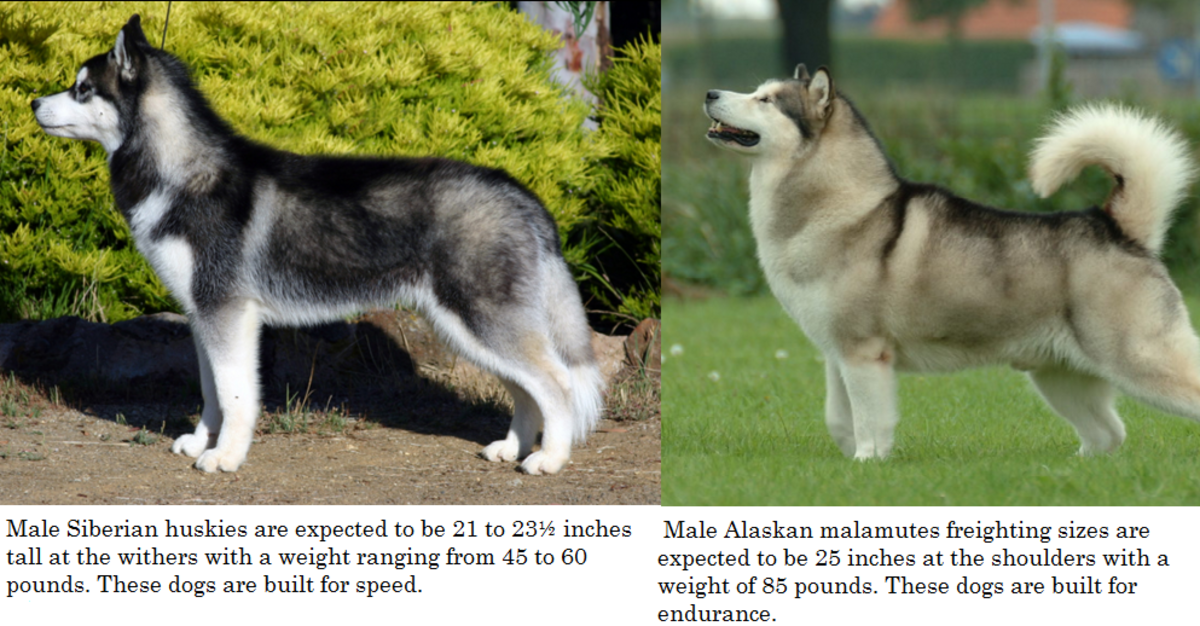
What is the Difference Between a Siberian Husky and an Alaskan Malamute? Daily Dog Discoveries
The Alaskan malamute is undoubtedly the larger dog than the Siberian husky and it stands up to 25 inches. And, the Siberian husky will grow up to 22 inches. Regarding weight, the Malamute is heavier than the husky (85-100 pounds). The adult husky dog weighs around 60 pounds and looks lighter than the Malamute.
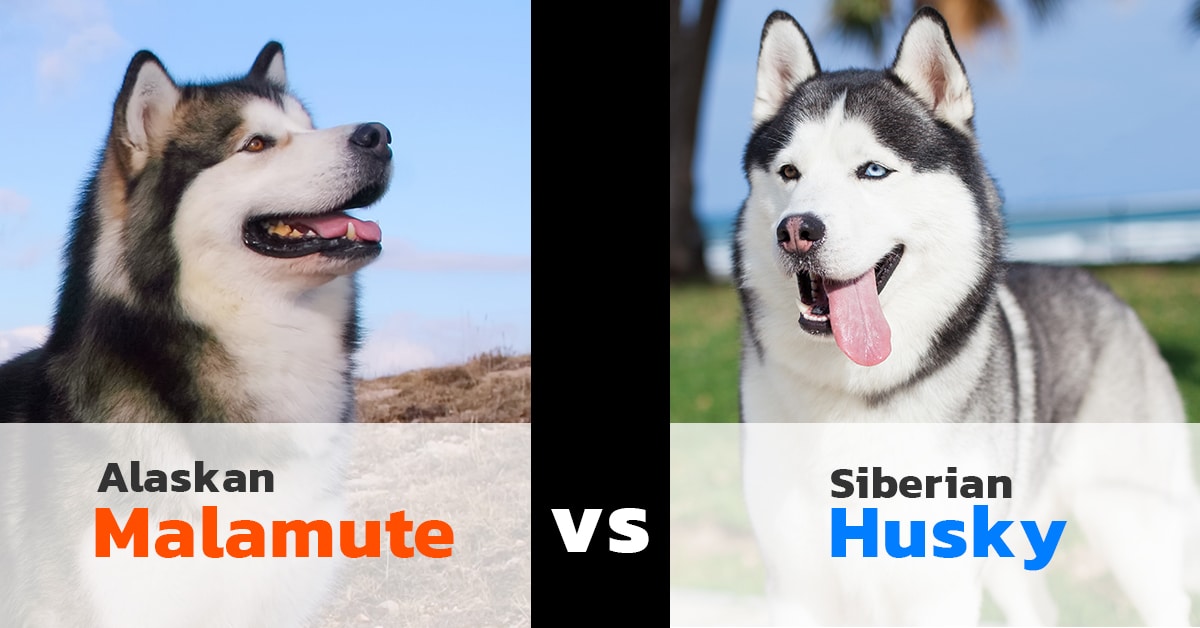
Malamute vs Husky The Deffinitive Guide 8 MUST know differences
Alaskan Malamute size vs Siberian Husky size. Alaskan Malamutes are considered large dogs, whereas Siberian Huskies are medium dogs. Malamutes can grow to a size between 23 inches (58 cm) and 25 inches (64 cm) tall, while they can weigh from 75 pounds (34 kg) to 85 pounds (39 kg). On the other hand, Siberian Huskies have a height range of 20.

Are Alaskan Malamutes The Same As Huskies
The Alaskan Malamute will grow to an average size of 23 to 25 inches (58cm to 64cm) and weigh between 75 and 85 pounds (34kg to 39kg). The Siberian Huskies, on the other hand, will have a height range from 20 to 23.5 inches (51cm to 60cm) and 35 and 60 pounds (16kg to 27kg). As we can see, the Alaskan Malamute is bigger-boned and much heavier.

Alaskan Malamute Vs Siberian Husky Differences Which Is Better? YouTube
Tails: Both breeds' tails are fluffy, but malamutes' are curled while huskies' are shaped like a brush. Eyes: Siberian huskies are more likely to have various shades of eye color, including amber, blue, and brown, while malamutes tend to have brown eyes. Huskies might also sport one brown eye and one blue or even half-blue and half-brown eyes.

Alaskan Malamute vs Siberian Husky Which Dog Is Better?
Alaskan Malamute vs Husky: Final Thoughts. Alaskan Malamutes and Siberian Huskies have a lot in common: they're both sled dogs, they both have high energy levels, and they're both tricky in the training department. However, Malamutes and Huskies have a few important differences that set them apart. Malamutes are much bigger and known more.

Alaskan Malamute Vs Siberian Husky Which is Better? Animals Comparison
2. The Malamute is a lot bigger than the Husky. The main difference between these two arctic dogs is the size. Huskies are typically considered as a medium-sized dogs and have nowhere near the heft of the largest dogs in the world. In fact, many of them have a lean muscular build.
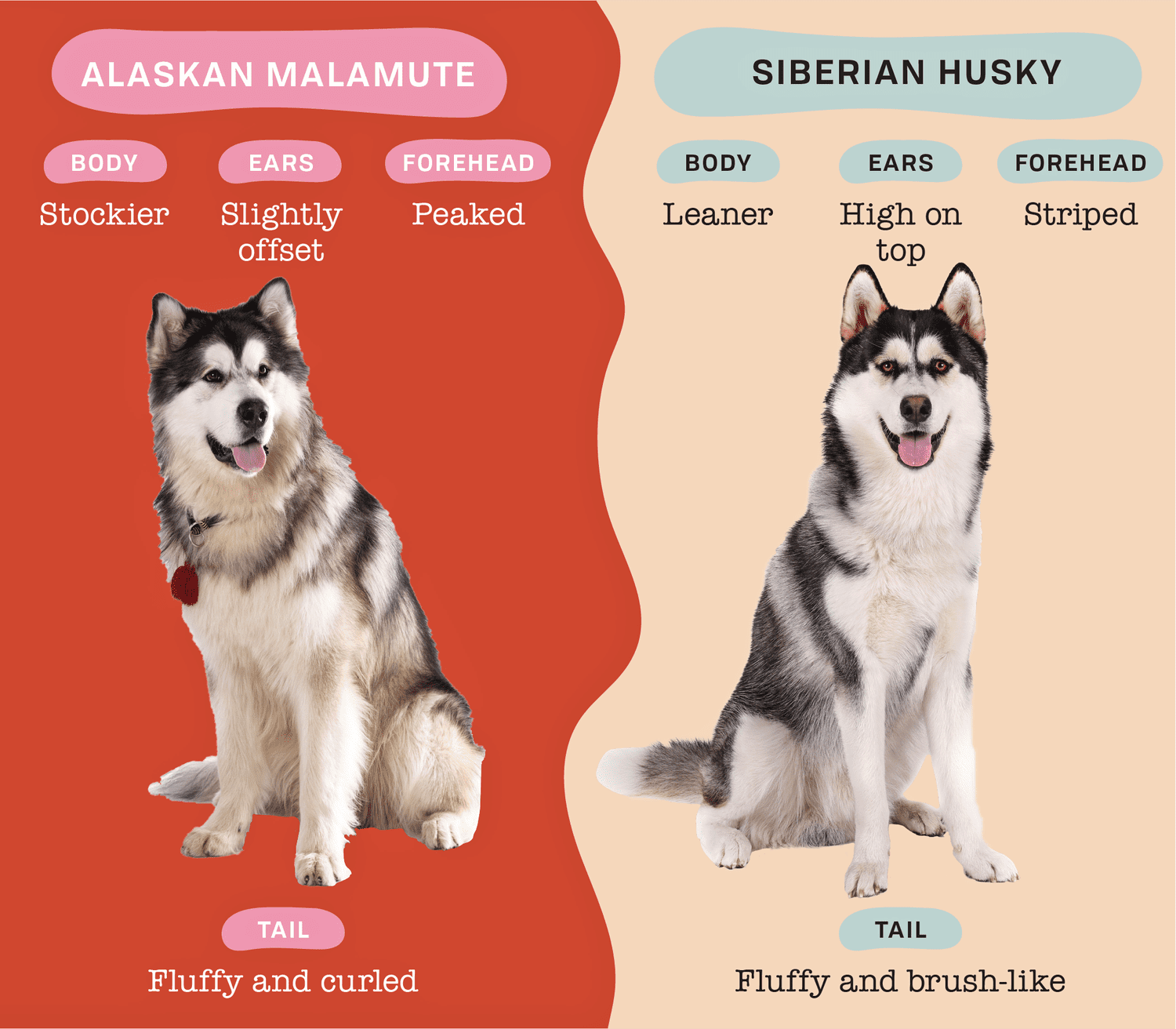
Alaskan Malamute vs. Siberian Husky How to Tell Them Apart Daily Paws
The Malamute is the weightlifter - big and strong.". This is evident in the weight of each breed. The Siberian Husky breed standard states that females weigh 35 to 50 pounds and males 45 to 60.
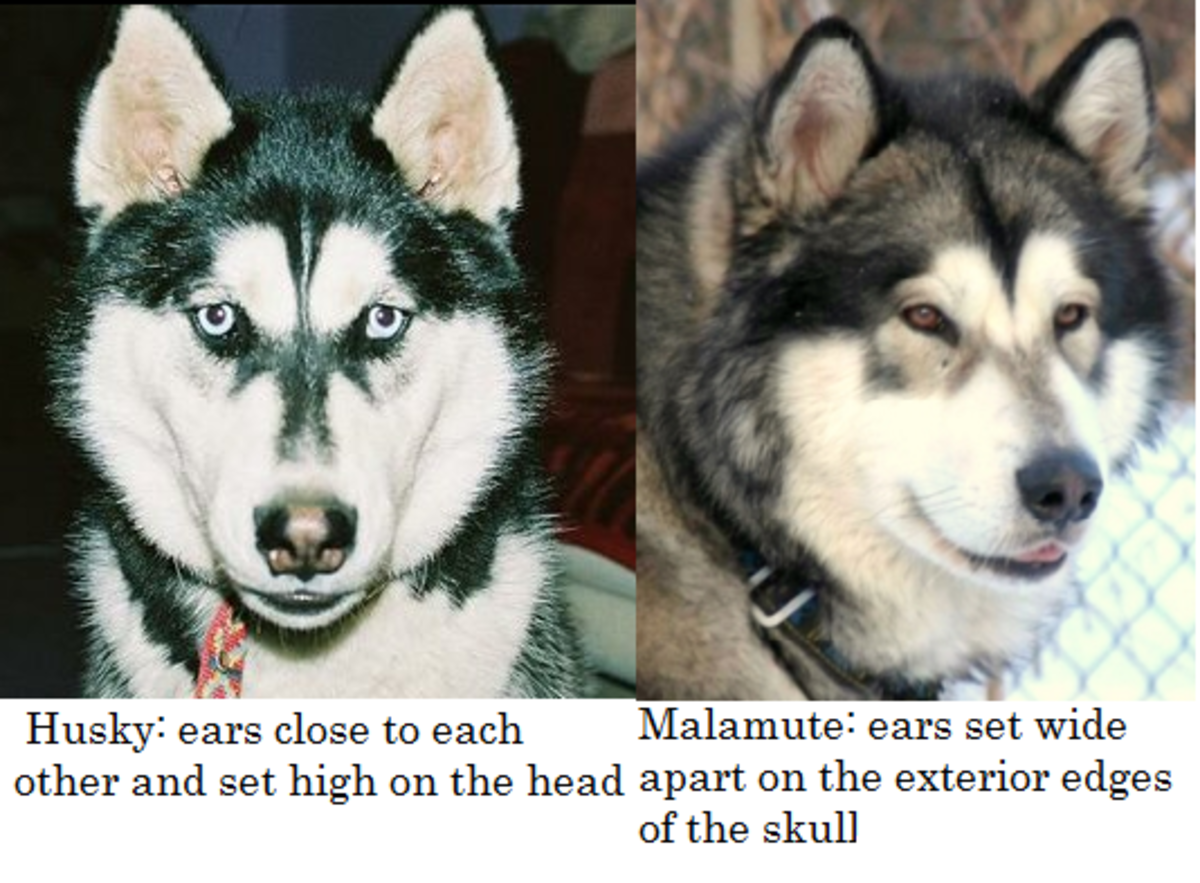
What is the Difference Between a Siberian Husky and an Alaskan Malamute? Dog Discoveries
When it comes to their height, Alaskan Malamutes are usually 1-5 inches taller. Naturally, females are slightly shorter than males. Regarding their weight, a typical Malamute male weighs between 85 and 100 pounds, while the average size of a Husky is between 45 and 60 pounds. With about 75 pounds, even female Malamutes weigh more than male.
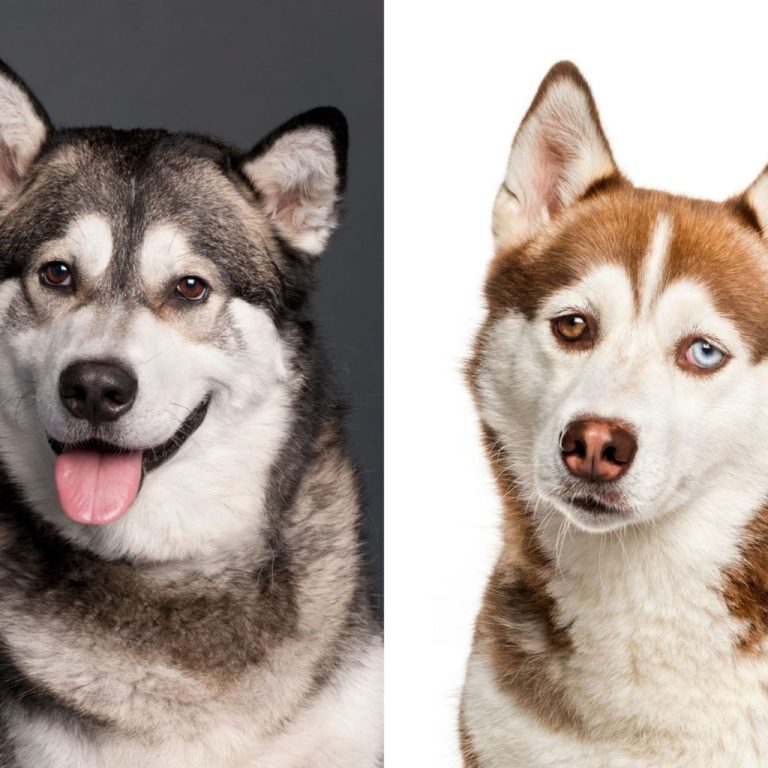
Alaskan Malamute vs Siberian Husky The Big Zoo
Although it's easy to confuse Alaskan malamutes and Siberian huskies, there are some notable differences. First, the Alaskan malamute clocks in around 75-85 pounds (34-39 kilograms), whereas the Siberian husky is typically smaller, between 40 and 60 pounds (18 and 27 kilograms), says DiNardo. But if you're looking for a sure way to spot the.